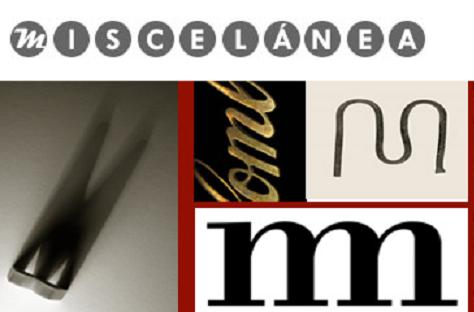"Wife. Mother. Criminal(?)": Representations of Abortion in Mike Leigh's Vera Drake (2004)
DOI:
https://doi.org/10.26754/ojs_misc/mj.20099663Palabras clave:
Aborto, Cine británico, Crimen, Daño, Vera DrakeResumen
Ambientada a principios de los años cincuenta en un barrio obrero de Londres,
Vera Drake (2004), de Mike Leigh, gira en torno a la vida de la protagonista Vera
y en torno al descubrimiento de su secreto mejor guardado: su labor como abortista clandestina. Este artículo examina cómo se trata la cuestión del aborto en la película y cómo se deconstruyen parcialmente los vínculos tradicionalmente establecidos entre el aborto, el crimen y el Mal. Como se argumenta, esta ‘descriminalización’ parcial del aborto que la película parece postular, proviene principalmente del tratamiento particular del tiempo que se hace, así como de la caracterización de Vera, el énfasis con el que la película se aproxima a su método abortivo, y a la prominencia que adquiere el aborto de Susan Wells. En última instancia, lo que la película de Leigh parece hacer es criticar la criminalización social y jurídica del individuo (de Vera Drake en este caso), para sugerir que una “teoría del daño social” en vez de una “teoría del crimen” serviría para explicar los problemas que rodean el aborto en el contexto de Vera Drake.
Descargas
Referencias
ALWARD, Peter. 2007. “Ignorance, Indeterminacy, and Abortion Policy”. The Journal of Value Inquiry. 41: 183–200.
AMERICAN HISTORICAL REVIEW (AND HISTORY COOPERATIVE). February 2005. 110 (1). Available at http://www.historycooperative.org/journals/ahr/110.1/br_147.html (Accessed 8 June 2007).
BELL-WILLIAMS, Melanie. 2006. “‘Shop-soiled’ Women: Female Sexuality and the Figure of the Prostitute in 1950s British Cinema”. Journal of British Cinema and Television. 2: 266–∫283.
BRIGGS, John, Christopher HARRISON, Angus MCINNES and David VINCENT. 1996. Crime and Punishment in England. An Introductory History. London: UCL.
BROOKES, Barbara. 1988. Abortion in England, 1900–1967. Worcester: Croom Helm Ltd. CARNEY, Ray and Leonard QUART. 2000. The Films of Mike Leigh. Embracing the World. Cambridge: Cambridge U.P.
COMMENT ON REPRODUCTIVE ETHICS. Available at http://www.corethics.org/ (Accessed 30 December 2008).
COOK, Hera. 2004. The Long Sexual Revolution. English Women, Sex and Contraception 1800–1975. Norfolk: Oxford U.P.
COOK, Pam. 1996. Fashioning the Nation. Costume and Identity in British Cinema. London: BFI.
FARRÉ, Susana. 2005. “El secreto de Vera Drake”, Miradas de Cine. 35. Available at http://www.miradas.net/2005/n35/criticas/02_elsecretodeveradrake.html (Accessed 14 June 2007).
FRIEDRICHS, David O. and Martin D. SCHWARTZ. 2007 “Editors’ Introduction: on social harm and a twenty-first century criminology”. Crime, Law and Social Change. 48: 1–7.
Guidance on the Termination of Pregnancy: The Law and Clinical Practice in Northern
Ireland. Department of Health, Social Services and Public Safety. Available at http://www.dhsspsni.gov.uk (Accessed 12 April 2009).
GILLET, Philip. 2003. The British Working Class in Postwar Film. Manchester: Manchester U.P.
HARPER, Sue. 1994. Picturing the Past. The Rise and Fall of the British Costume Film. London: BFI.
HIGSON, Andrew. 1998. “British Cinema”. In Hill, John and Church Gibson. (eds.) The Oxford Guide to Film Studies. Oxford: Oxford U.P.: 501–509.
HILL, John (1986) 1997. Sex, Class and Realism. British Cinema between 1956–1963. London: BFI.
HILLYARD, Paddy and Steve TOMBS. 2007. “From ‘crime’ to social harm?” Crime, Law and Social Change. 48: 9–25.
ICART, María Teresa, Rosa ROZAS, et al. 2007. “El secreto de Vera Drake (2004) y La Normas de la Casa de la Sidra (1999): el aborto en el cine y su utilización en la docencia”. Revista Medicina y Cine. 3: 113–121.
LANDY, Marcia. 1991. British Genres. Cinema and Society, 1930–1960. Oxford: Princeton
U.P.
—. 2001. The Historical Film: History and Memory in Media. London: Continuum International.
LAWRENSON, Edward. 2005. “Backstreet Revisited”. Sight and Sound. 151 (1): 12–15. LAY, Samantha. 2002. British Social Realism. From Documentary to Brit Grit. London and
New York: Wallflower.
LEE, Murray. 2007. Inventing Fear of Crime. Criminology and the Politics of Anxiety. Devon: Willan Publishing.
MONTERDE, José Enrique. 2001. “Dos o tres cosas que sé del Free Cinema”. In En torno al Free-Cinema, la tradición realista en el cine británico. V.V.A.A. Valencia: Ediciones de la Filmoteca, Generalitat Valenciana: 75–100.
MURPHY, Robert. 1992. Sixties British Cinema. England: BFI.
—. 2005. “Crime and Passion”. Sight and Sound. 151 (1): 16.
NEWMAN, Karen. 1996. Fetal Positions. Individualism, Science, Visuality. Stanford, California: Stanford U.P.
O’HAGAN HARDY, Molly. 2006. “Gendered Trauma in Mike Leigh’s Vera Drake (2004)”. Studies in European Cinema. 3 (3): 211–221.
PEMBERTON, Simon. 2007. “Social harm future(s): exploring the potential of the social
harm approach”. Crime, Law and Social Change. 48: 27–41.
ROBERTSON, James C. 1999. “The censors and British gangland, 1913–1990”. In Chibnall, Steve and Robert Murphy. (eds.) British Crime Cinema. London: Routledge: 16–26.
ROBINSON, Warren C. 2002. “Population Policy in Early Victorian England”. European Journal of Population. 18: 153–173.
RODRÍGUEZ CHICO, Julio. 2005. “Vera Drake. Interpretación de una realidad inexistente”. La Butaca. Revista de cine online. Available at http://www.labutaca.net/52sansebastian/veradrake1.htm (Accessed 15th April 2008).
SARGEANT, A. 2005. British Cinema. A Critical History. London: BFI.
Society for the Protection of the Unborn Child. Available at http://www.spuc.org.uk/ (Accessed 30 December 2008).
STRICKLER, Jennifer and Nicholas L. DANIGELIS. 2002. “Changing Frameworks in Attitudes towards Abortion”. Sociological Forum. 17 (2): 187–201.
THANE, Pat M. 1990. “The Debate on the Declining Birth-Rate in Britain: The ‘Menace’ of an Ageing Population, 1920s–1950s. Continuity and Change. 5: 283–305.
UK LifeLeague. Available at http://www.uklifeleague.com/ (Accessed 30 December 2008).
WOODSIDE, Moya. 1971. “Attitudes of women abortionists”. In Medawar J. and Pyke D. (eds.) Family Planning. London: Penguin: 126–137.
WORTH, Jennifer. 2005. “A deadly trade”. The Guardian, January 6th. Available at http://film.guardian.co.uk/features/featurepages/0,,1384163,00.html (Accessed 5 April 2007).
Descargas
Publicado
Número
Sección
Licencia

Esta obra está bajo una licencia internacional Creative Commons Atribución-NoComercial 4.0.


